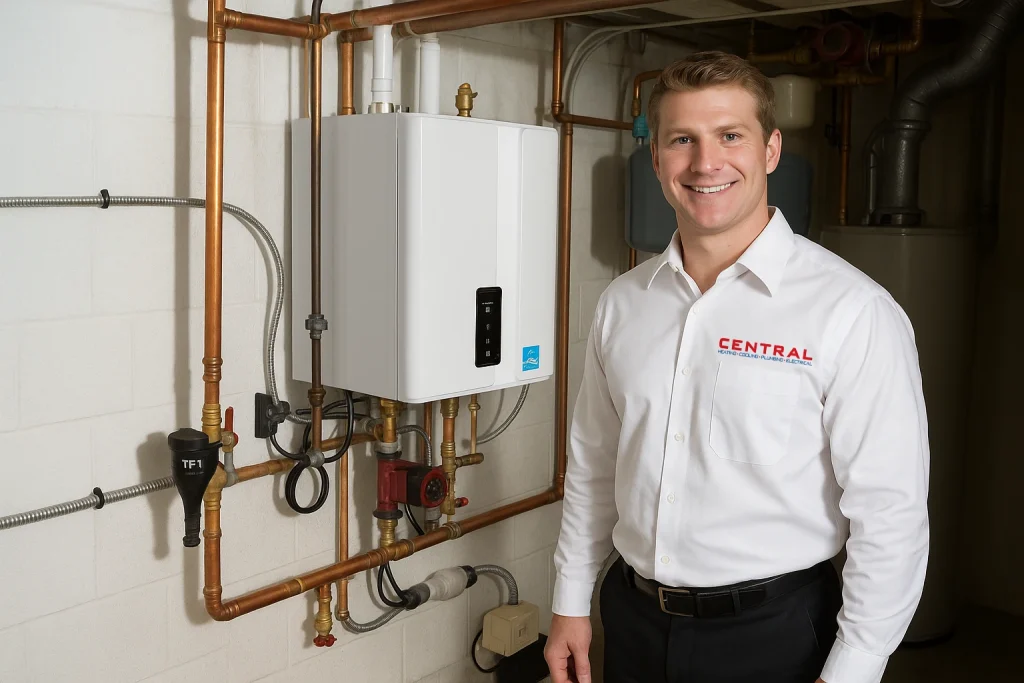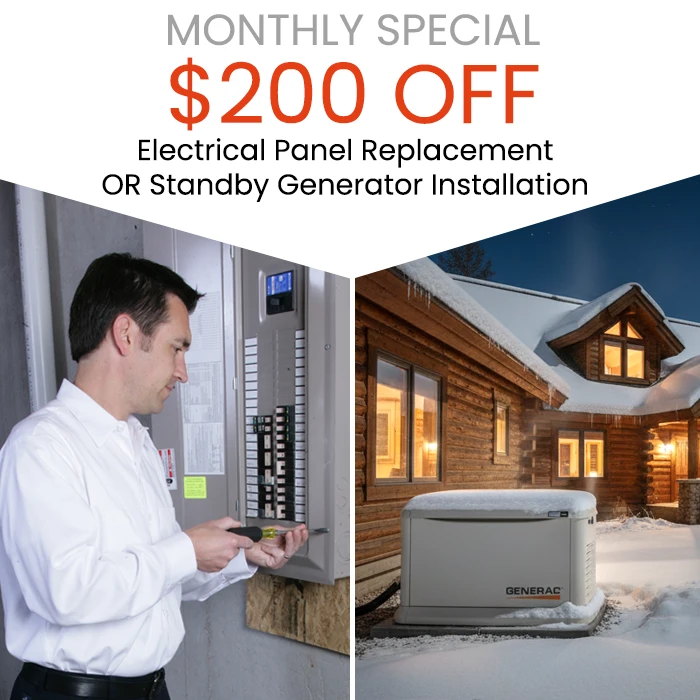
When temperatures drop well below freezing across the Flathead Valley, you need a heating system that can handle Montana’s brutal winters while keeping your energy bills manageable. High-efficiency boilers are one of the smartest investments you can make for long-term comfort, reliability, and savings. Whether you live in Kalispell, Whitefish, or Bigfork, upgrading to a high-efficiency boiler can transform how your home feels… and how much you spend to heat it.
What Makes a Boiler “High Efficiency”?
Boiler efficiency is measured by its Annual Fuel Utilization Efficiency (AFUE) rating. A standard boiler may operate at 80% efficiency, meaning 20% of the fuel’s energy is lost through exhaust. High-efficiency models, by contrast, achieve 90% to 98% AFUE thanks to advanced technology such as:
- Condensing technology that captures and reuses heat from exhaust gases.
- Modulating burners that automatically adjust output to match your home’s heating demand.
- Sealed combustion systems that draw in outdoor air for cleaner, safer, and more efficient operation.
Why They’re Perfect for Montana’s Climate
Montana winters can be unforgiving, with long stretches of subzero temperatures. That’s where high-efficiency boilers excel. They’re designed to provide consistent, even heat—no cold spots, no drafts, and no struggling furnace noises when the temperature plunges. Here’s why they’re especially suited for Montana homes:
- Consistent Comfort: Radiant or hydronic heat keeps your entire home warm from the ground up, even in extreme cold.
- Energy Savings: With fuel prices climbing, the 10–20% efficiency gain can add up to significant savings every winter.
- Quiet Operation: Boilers operate more quietly than forced-air systems, which is ideal for peaceful mountain living.
- Durability: High-efficiency boilers are built to last, with stainless steel heat exchangers and sealed combustion designs that stand up to Montana’s rugged conditions.
Long-Term Reliability in Harsh Conditions
Montana’s climate is hard on heating equipment. Temperature extremes, long operating hours, and the need for absolute reliability make quality crucial. High-efficiency boilers from manufacturers like Lennox are engineered for durability with:
- Stainless steel heat exchangers resistant to condensation corrosion
- Advanced control systems with self-diagnostics
- Premium components designed for extended service life
- Comprehensive warranties that protect your investment
When properly maintained through programs like preventive maintenance services, high-efficiency boilers can provide 20-25 years of reliable service, outlasting conventional boilers by 5-10 years.
Real Cost Savings for Montana Homeowners
The financial case for high-efficiency boilers in Montana is compelling. For homes in cold climates like the Flathead Valley, annual heating costs typically range from $1,500 to $3,000 or more for a 2,500 square foot home, depending on fuel type, system efficiency, and insulation quality. Homes with older, less efficient systems (60-70% AFUE) consistently fall on the higher end of this range.
Upgrading from an old 70% efficiency boiler to a modern 95% AFUE high-efficiency unit represents a 25 percentage point improvement in efficiency. According to ENERGY STAR, homeowners can save anywhere from 10-30% on heating costs when upgrading to a high-efficiency boiler. For Montana homes where heating represents a significant portion of annual utility expenses, these savings compound quickly, potentially hundreds of dollars per year depending on your current system’s efficiency and fuel costs.
High-efficiency boiler installations typically cost between $4,000 and $10,000 depending on the system size, brand, and complexity of installation. While the upfront investment is significant, Montana’s extended heating season, often 8-9 months compared to 4-6 months in milder climates, means these efficiency gains compound faster than in most other regions. Combined with available federal tax credits and potential utility rebates, many Montana homeowners find the investment pays for itself over the system’s 20-25 year lifespan.
Environmental Benefits
Modern high-efficiency boilers not only lower your energy bills but also reduce your home’s carbon footprint. By using less fuel and producing fewer emissions, they’re a cleaner, greener way to heat your home—helping protect the pristine Montana environment we all love.
Choosing the Right Boiler for Your Home
Boilers come in a range of capacities and configurations. The right system depends on your home’s size, insulation, and existing heating setup. At Central Heating, Cooling, Plumbing & Electrical, our NATE Certified technicians evaluate your home and recommend the ideal high-efficiency boiler for maximum comfort and performance.
We install and service industry-leading boilers from Lochinvar and Navien, systems designed to provide many years of reliable performance.
Maintenance Makes All the Difference
Regular maintenance is key to keeping your boiler running efficiently and safely. Our Comfort Care Program members receive semiannual system checks, priority service, and exclusive discounts, ensuring your boiler is always ready when you need it most.
Call Central for Expert Boiler Installation in the Flathead Valley
If you’re ready to upgrade to a high-efficiency boiler, contact the trusted professionals at Central Heating, Cooling, Plumbing & Electrical. We’ve served the Flathead Valley for more than 33 years, delivering reliable comfort and lasting value to homeowners across Kalispell, Whitefish, Columbia Falls, Bigfork, Polson, Lakeside, and Somers.
Schedule your boiler consultation today or call us to learn how a high-efficiency boiler can make your Montana home more comfortable and energy-efficient than ever.
Sources and References
Heating Cost Data: National heating cost ranges for cold-climate regions based on industry analyses for 2,500 sq ft homes. Specific costs vary by fuel type, home insulation, and current energy prices.
Efficiency Ratings and Savings: AFUE ratings and efficiency data sourced from the U.S. Department of Energy and ENERGY STAR program documentation.
Installation Costs: Boiler replacement cost ranges based on 2024-2025 data from HomeAdvisor, Angi, HomeGuide, and This Old House industry cost databases.
Carbon Emissions Data: U.S. Department of Energy statistics on carbon dioxide emissions reductions from heating system efficiency upgrades.
Tax Credits and Rebates: Federal tax credit information from ENERGY STAR and Montana Department of Environmental Quality Home Energy Rebates Program documentation.



